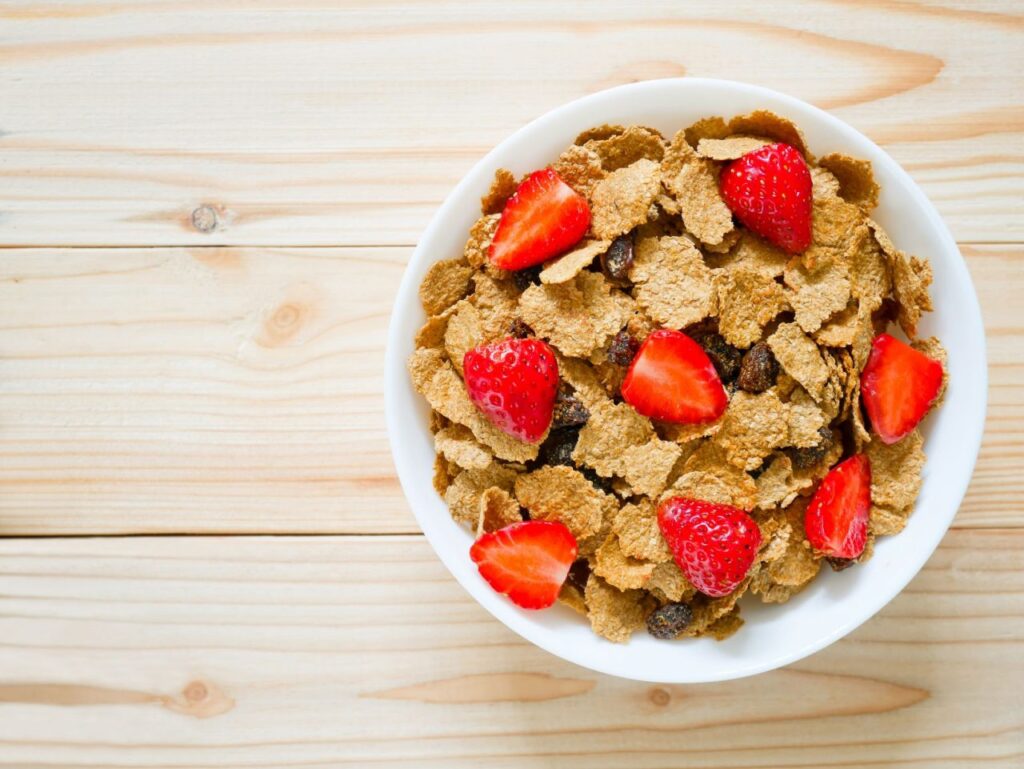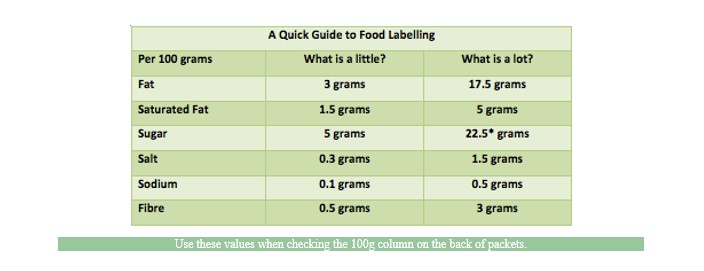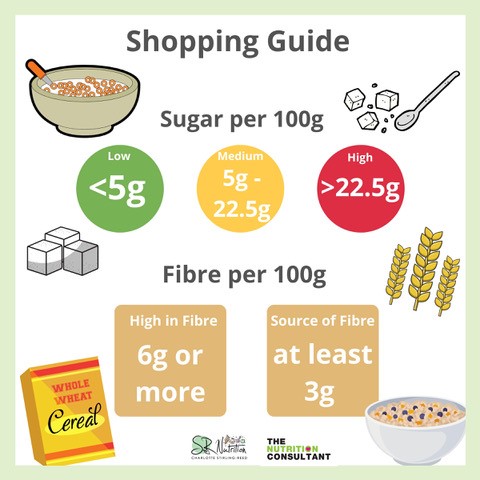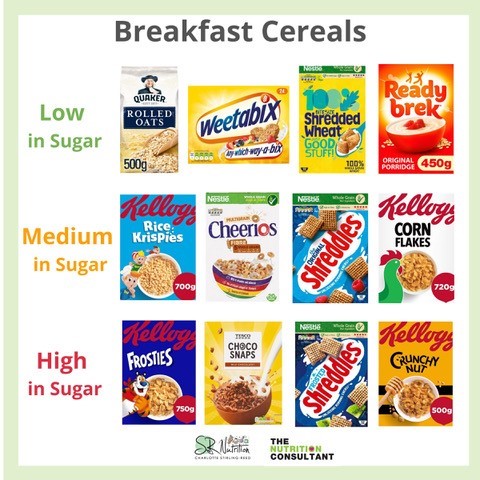I recently shared a post on Instagram about breakfast cereals. Which sparked a lot of questions about which ones were best for babies and young children. I’ve previously written a blog about breakfast cereals that are ideal for little ones. But it’s time to update that blog with some more information and more relevant products. How to choose a healthy breakfast cereal, with not too much sugar in, is so important for your little ones!
There are SO many choices when it comes to breakfast cereals. It can be hard to decipher which ones to choose for your little one. So I wanted to share some of my top tips, along with a few things to look out for when reading the labels.
p.s. I have a whole blog on HOW to read labels too


Why offer breakfast cereals?
Despite some of the bad press, breakfast cereals are a quick and convenient option that many children enjoy. So, naturally, they’re a popular breakfast choice. They can be a great way to include a source of carbohydrates and fibre (depending on the type). Also, by adding milk or yoghurt and topping with fruit, milled seeds or nut butter, you can create a really balanced, nutritious meal to start the day. Read my blog here on How to get Extra Nutrients into my Child’s Breakfast!
Another important point to note about breakfast cereals is that many of them are fortified with vitamins and minerals. Which means they’ve had nutrients added, regardless of whether they naturally contained them before. While it’s not mandatory in the UK for breakfast cereals to be fortified, in practice most of them are. This can be a great way to meet recommended requirements for children, particularly if restricting any foods due to dietary choices or allergies.
The most common nutrients that are added to cereals include niacin, thiamine, riboflavin, vitamin B6, folic acid and iron. While some also have added vitamin D and B12. Whilst these are all nutrients that can be found in other foods, cereals are often one of the most common source of these nutrients, both for children and adults. It’s important not to dismiss that!
So, what should I look out for when buying Breakfast Cereals?
Unfortunately, many breakfast cereals marketed to kids can be quite high in sugar and salt and therefore aren’t always ideal to offer to young children regularly. By looking out for a few facts on the label, it can be easier to make sense of which ones are a smart, regular choice.
By checking the 100g column on the back of labels we can easily see what foods are high, low and medium in salt and sugar, as in the table below.


Use these values when checking the 100g column on the back of packets.
* the amount that qualified as ‘High Sugar’ used to be 15grams/100grams until 2014 when the Government changed it to 22.5grams/100g.
To put this into context with some of the most popular brands available, the graphic below compares the sugar and fibre content. As you can see, there’s quite a big difference in sugar content from the lowest (0.7g/100g) to the highest (37g/100g)!


Infographic by Charlotte Radcliffe
As a reminder, for sugar ideally you want to aim for those with less than 5g/100g and for fibre, anything with at least 3g/100g is considered a “source of fibre.”
And here’s another great visual comparing these brands for low, medium and high sugar content:


Infographic by Charlotte Radcliffe
Hopefully this will help when choosing breakfast cereals for your little ones! I’ll be sharing a more detailed guide to making sense of food labels soon and you can also find more information on breakfast cereals, healthy breakfast ideas, food labels and a quick guide to label reading using these links.
Massive thank you to Charlotte Radcliffe BSc Hons, RNutr from The Nutrition Consultant for producing these infographics and for Katarina Martinez-Thomas from What Food When for helping me to update this blog.
I have plenty of breakfast ideas on my blog too, so check them out e.g. Top Ten Healthy Breakfasts!